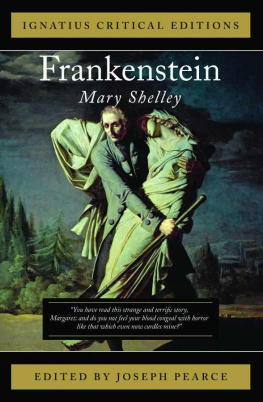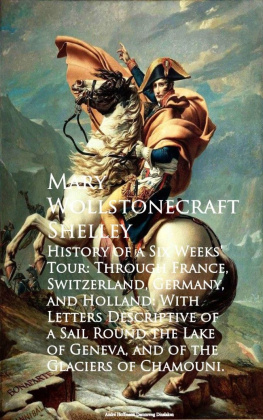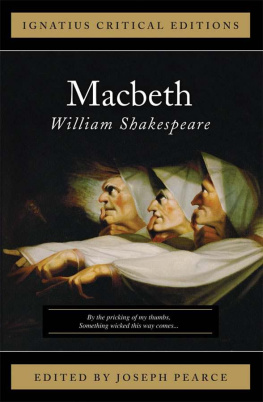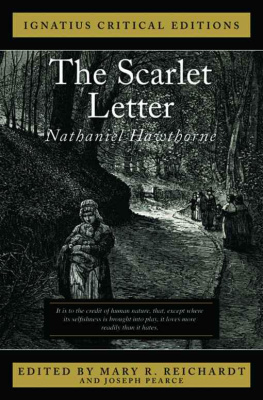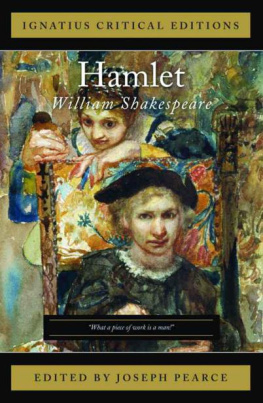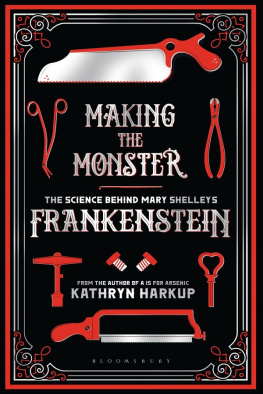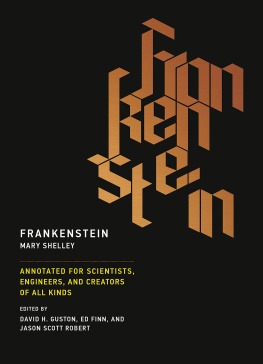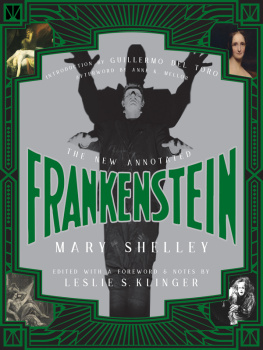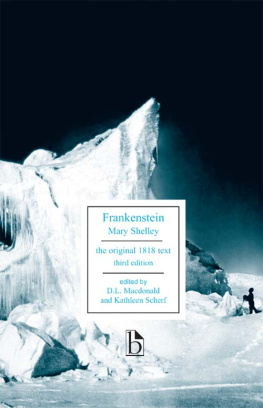FRANKENSTEIN
MARY SHELLEY
FRANKENSTEIN
Edited by JOSEPH PEARCE
IGNATIUS PRESS SAN FRANCISCO
Cover art:
Pierre-Antoine Vafflard, Young and His Daughter .
Musee des Beaux-Arts, Angouleme, France
Photo Credit: Erich Lessing / Art Resource, N.Y.
Cover design by John Herreid
2008 Ignatius Press, San Francisco
All rights reserved
ISBN 978-1-58617-138-4
Library of Congress Control Number 2007927191
Printed in the United States of America
Tradition is the extension of Democracy through time; it is the proxy of the dead and the enfranchisement of the unborn.
Tradition may be defined as the extension of the franchise. Tradition means giving votes to the most obscure of all classes, our ancestors. It is the democracy of the dead. Tradition refuses to submit to the small and arrogant oligarchy of those who merely happen to be walking about. All democrats object to men being disqualified by the accident of birth; tradition objects to their being disqualified by the accident of death. Democracy tells us not to neglect a good mans opinion, even if he is our groom; tradition asks us not to neglect a good mans opinion, even if he is our father. I, at any rate, cannot separate the two ideas of democracy and tradition .
G. K. Chesterton
Ignatius Critical EditionsTradition-Oriented Criticism for a new generation
CONTENTS
Joseph Pearce
Contemporary Criticism
Jo Bath
Philip Nielsen
Thomas W. Stanford III
Aaron Urbanczyk
INTRODUCTION
Joseph Pearce
Ave Maria University
Mary Shelleys Frankenstein is one of the most influential novels of the nineteenth century; it is also one of the most misunderstood and abused. In recent years, it has been vivisected critically by latter-day Victor Frankensteins, who have transformed the meanings emergent from the novel into monsters of their own contorted imaginations. Most particularly, Franken-feminists have turned the novel into a monster of misanthropy. Seldom has a work of fiction suffered so scandalously from the slings and arrows of outrageous criticism.
Much of the problem in understanding the novel derives from the conflicting forces at work in its pages, forces that were a whirlwind of warring influences in the mind and heart of its teenage author. On a purely emotional level, the young Mary Shelley was surrounded by tragedy, including the death in early infancy of her first child and the suicide of two intimate relations. She was also battling with the monsters of modernity and struggling with the atheistic philosophy of her father and the iconoclastic musings of her lover. Within the pages of Frankenstein we see the savagery of Rousseau, the pseudosatanic manipulation of Milton, the Romantic reaction against the dark satanic mills of science and industrialism, the conflict between the light Romanticism of Wordsworth and Coleridge and the darker Romanticism of Byron and Shelley, and, perhaps most enigmatically, the struggle between the two Shelleys themselves, and perhaps the emergence of Mary from Percys shadow.
Since the personhood of Mary Shelley is daubed across the pages of Frankenstein in gaudy shades of angst-driven self-expression, it is crucial to understand something about the author before we can begin to get to grips with the work. In the preface to the Norton Critical Edition of Frankenstein, J . Paul Hunter describes Mary as being irritated by the torments of conventional family values. Such an assessment is singularly odd considering that Mary had no experience of conventional family valuesher own family and her own upbringing being anything but conventional. Her father, William Godwin, was a proponent of atheism and an advocate of the dissolution of the institution of marriage, describing marriage as the worst of all laws; her mother, Mary Wollstonecraft, a protofeminist, died from childbirth complications eleven days after Marys birth on August 30, 1797. In 1801 Marys father remarried. Thereafter, the family in which Mary grew up consisted of her father, her stepmother, a stepbrother and a stepsister, and a half sister, Fanny Imlay, the daughter of her mother by Gilbert Imlay. Pace Hunter, any torments suffered by Mary Shelley must be laid at the door of her very unconventional family background.
In November 1812, Mary, then fifteen years old, met Percy Bysshe Shelley for the first time. He was with Harriet West-brook, whom he had just married. In July 1814 Percy Shelley deserted his pregnant wife and one-year-old child and fled to the Continent with the sixteen-year-old Mary, who was also pregnant. In November Harriet Shelley gave birth to her second child; in the following February Mary gave birth, prematurely, to a daughter who died within a few days. Almost a year later, in January 1816, Mary gave birth to a son, William.
In the summer of 1816, Mary and Percy visited Lord Byron at the Villa Diodati by Lake Geneva in Switzerland. After reading Fantasmagoriana , an anthology of German ghost stories, Byron challenged Mary, Percy, and his personal physician, John William Polidori, each to compose a story. Byron, responding to his own challenge, began to write about the vampire legends he had heard while traveling in the Balkans. He aborted his attempt to bring the fragment to fruition, but Polidori, using Byrons fragment as inspiration, wrote The Vampyre , which, when published in 1819, became the progenitor of the Romantic vampire literary genre. Polidoris modest literary achievement would be eclipsed, however, by Frankenstein , which was Marys response to Byrons challenge.
Mary began writing Frankenstein in June 1816, when she was still only eighteen years old; she would not finish it until the following May. The eleven months during which she was working on the novel were almost as macabre in real life as was the unfolding of the plot in the teenagers fevered imagination. In October 1816 Fanny Imlay, Marys half sister, committed suicide, and in December the drowned body of Harriet Shelley was discovered in the Serpentine, in Londons Hyde Park, some weeks after she had presumably committed suicide. On December 30, only days after the discovery of Harriets body, Mary and Percy were married in St. Mildreds Church in Bread Street, London. (The church had been selected because Bread Street was where John Milton had been born more than two centuries earlier.) In March 1817 Percy was denied custody of his two children by Harriet. All this happened while Mary was working on Frankenstein and the shadow of these events account, no doubt, for much of the doom-laden and death-darkened atmosphere of the novel. It might almost be said, or at least plausibly suggested, that the ghost of Harriet Shelley haunted the authors imagination as she worked; if so, it is equally plausible to suggest that the Monster can be seen as a metaphor for the destructive power of the unleashed passion between Mary and Percy. Following the same line of deduction, it could be said that Frankensteins guilt-ridden horror of the destruction he had caused is itself a reflection of Marys guilt at the consequences of her passionate affair with Shelley. This allegorical reading of the novel would place Mary Shelley in the role of Victor Frankenstein, and the Monster in the role of the illicit and destructive relationship between Mary and Percy.
Although the presence of this tragic backdrop pervades the work, it should not eclipse the many other elements that serve to add to the deadly cocktail of depth and delusion that makes Frankenstein such a beguilingly deceptive story. From the very beginning, on the title page itself, we are given tantalizing clues concerning the aesthetic and philosophical roots of Mary Shelleys inspiration and perhaps an inkling of her purpose. In giving Frankenstein the alternative title of The Modern Prometheus , and coupling it with the epigraph conveying Adams complaint from Paradise Lost , we see the leitmotif established concerning the relationship between Creator, creature, and creativity. The allusion to the Prometheus myth conjures images of the creation of man in defiance of the gods; the citation of Adams complaint conjures the image of the creation of man in defiance of man:
Next page
